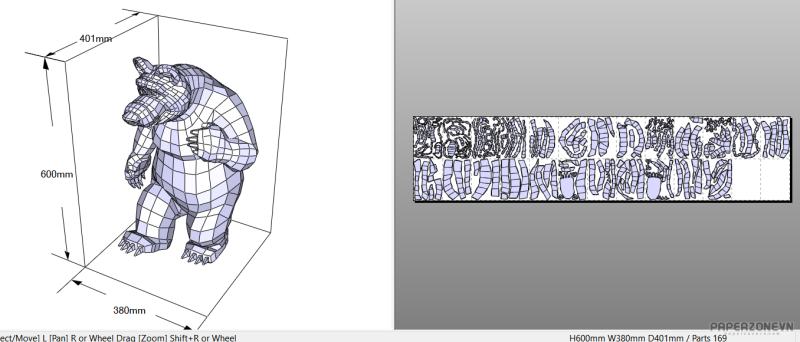- Thumbnail
-

- Resources
- Received from the internet
- Author
- Unknown
- Printed File Format
- PDO
- Page(s)
- 24
- Part(s)
- 169
- Instruction Format
- PDO
Sponsored:
Sponsored 2:
Bear (медведь) papercraft
The New World short-faced bears (Tremarctinae) differentiated from Ursinae following a dispersal event into North America during the mid-Miocene (about 13 Mya). They invaded South America (≈2.5 or 1.2 Ma) following formation of the Isthmus of Panama. Their earliest fossil representative is Plionarctos in North America (c. 10–2 Ma). This genus is probably the direct ancestor to the North American short-faced bears (genus Arctodus), the South American short-faced bears (Arctotherium), and the spectacled bears, Tremarctos, represented by both an extinct North American species (T. floridanus), and the lone surviving representative of the Tremarctinae, the South American spectacled bear (T. ornatus).
H: 600mm x W: 380mm x D: 401mm


The New World short-faced bears (Tremarctinae) differentiated from Ursinae following a dispersal event into North America during the mid-Miocene (about 13 Mya). They invaded South America (≈2.5 or 1.2 Ma) following formation of the Isthmus of Panama. Their earliest fossil representative is Plionarctos in North America (c. 10–2 Ma). This genus is probably the direct ancestor to the North American short-faced bears (genus Arctodus), the South American short-faced bears (Arctotherium), and the spectacled bears, Tremarctos, represented by both an extinct North American species (T. floridanus), and the lone surviving representative of the Tremarctinae, the South American spectacled bear (T. ornatus).
H: 600mm x W: 380mm x D: 401mm


Sponsored: Google Advertising
